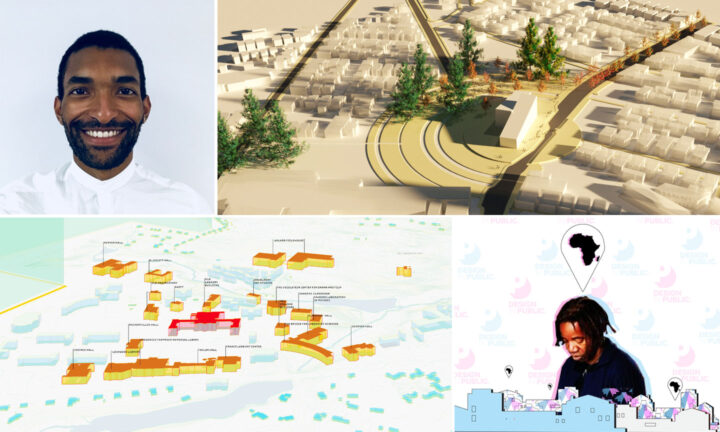Gabriel Ramos is a second year graduate student of Urban Planning at the Harvard Graduate School of Design (GSD) and Design Fellow with Africatown Seattle through the GSD Community Service Fellowship. Academically, Gabriel is interested in regional geography and planning, biourbanism, and design for social innovation. Prior to graduate school, Gabriel studied at Vassar College, where he majored in urban studies and minored in studio art. His experiences at Vassar, including his involvement in Transitions—a matriculation to graduation initiative for first generation and/or low-income college students—gave him confidence in his perspectives, as well as a sense of ownership over his educational success and career path. Being a first-generation college graduate is something that drives Gabriel to excel so that he can work to help underrepresented students enter, succeed, and lead in the design professions. Gabriel believes the world needs more diverse designers in charge of leading their visions, and he is optimistic that we’re going to achieve this vision soon.
Q: TRUST in design is…
A: A daily effort, a practice, a routine.
Q: Where have you found TRUST in/ through design?
A: Through my personal and academic research, I’ve come to understand that design is more than just an act that we do, but a process that very much relates to how we experience and think about the world around us. For the act to be successful it must be rooted in awareness and understanding—two things which require constant learning.
Q: Where do you see a need for TRUST in/ by design?
A: Research! I think research is probably one of the most exciting parts of starting a project. I try to trust that anytime I get stuck, I need to find a book or article or precedent that speaks to my issue. You feel affirmed and even more curious about narrowing down the subject.
Q: Who or what inspires you?
A: My family. My family comes from such a rich history, with my mother being black and my father being Puerto Rican. I think educating myself on our connections with the greater diaspora has been profound for me as a creative person. Recognizing my history has shifted the way I view art and design significantly.
Q: My favorite thing about my city is…
A: The storms. I was raised in a small city in Florida called Oldsmar, and I think the climate of Florida has always been interesting. We always got our storms either in the morning or a little before dinner depending on the direction of the wind, but it becomes part of your internal clock. It’s quite amazing.
Q: Tell us about a project that you completed that you are most proud of.
A: My senior year of undergrad I wrote my senior project exploring the impacts the ideology of white supremacy had on the built environment in American cities. The time between the emancipation to the “civil rights era” spans roughly a century, a time span where we saw the failed promise of the Reconstruction, Jim Crow, and segregation eras. To not consider how these cultural milieus shaped the norms of our professions, designs, and aesthetics I think is to be ahistorical and irresponsible.
Q: What is your ultimate goal when it comes to your work? What do you want to contribute?
A: When it comes to urban planning and design I think I want to get more people interested and invested in it. I think a lot of people just accept their environments for what they are, as opposed to challenging them to be more. We live our lives saturated by designs but when the designers aren’t diverse, we really find ourselves living somewhat one-dimensionally. I think culturally and creatively, designers and our respective professions have much potential, but there’s a lot of work that needs to be done to realize it.
Q: If you could have one superpower what would it be and why?
A: I’d love to teleport or levitate, although I think unless I had the lifestyle that required instant travel I’d opt for levitation. It’s less practical probably, but more of a party trick.
Q: What’s next for you?
A: Graduate with my masters from the GSD, and then who knows, but hopefully something creative, innovative, and impactful.
Learn more about Gabriel’s work:
Website – Harvard GSD AASU /africatowndesignweekend.com
Instagram – @ra_moose
Email – ramos.gabrielalexander@gmail.com
Be sure to check out Gabriel’s work at the Imagine Africatown Design Weekend, July 13-14, 2018! Featuring a Design Town Hall in collaboration with Design in Public, an outdoor Community Dinner, and participatory Design Ciphers, this two-day event brings national thought leaders to Seattle to imagine the future of Black neighborhoods.





